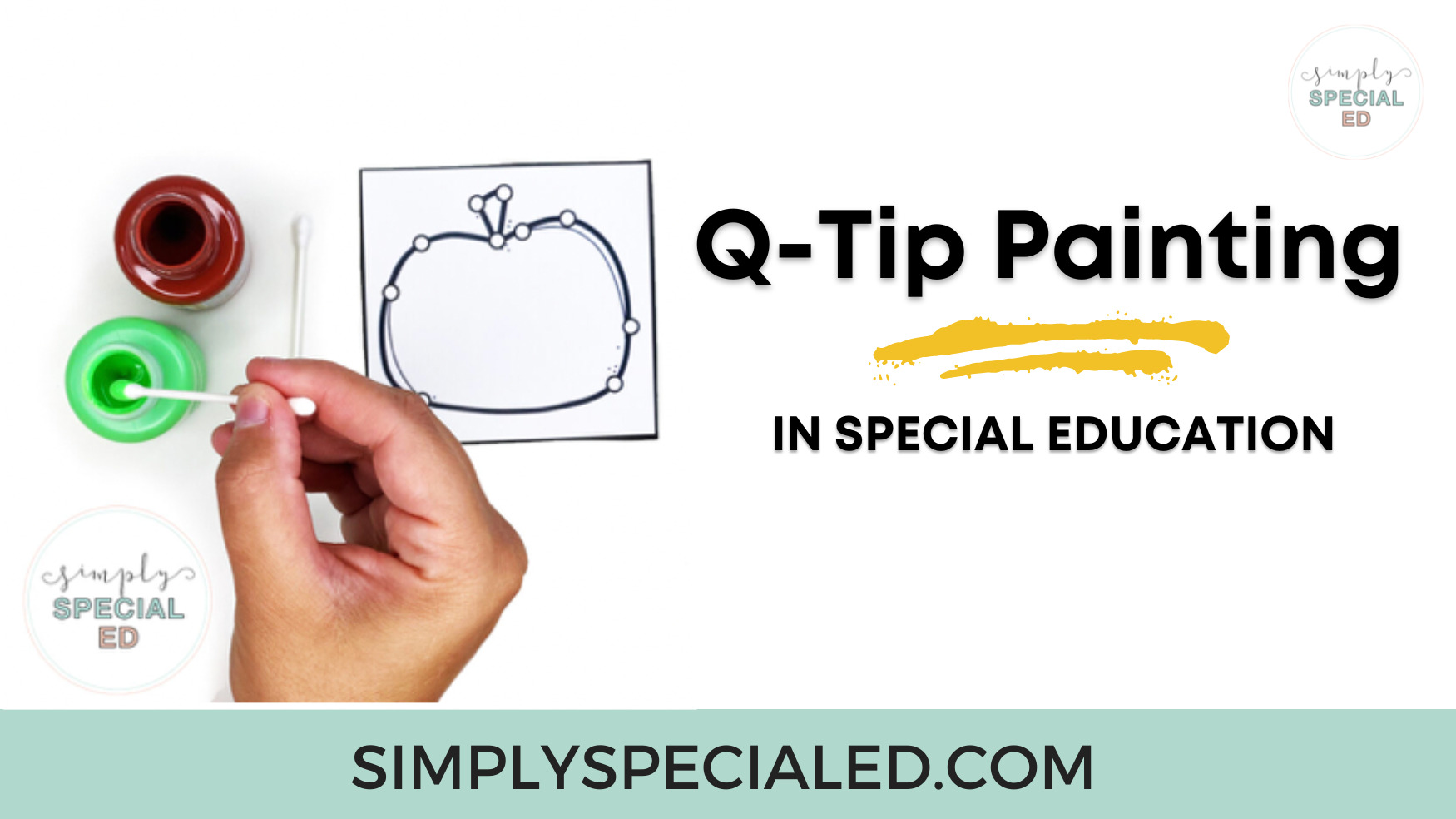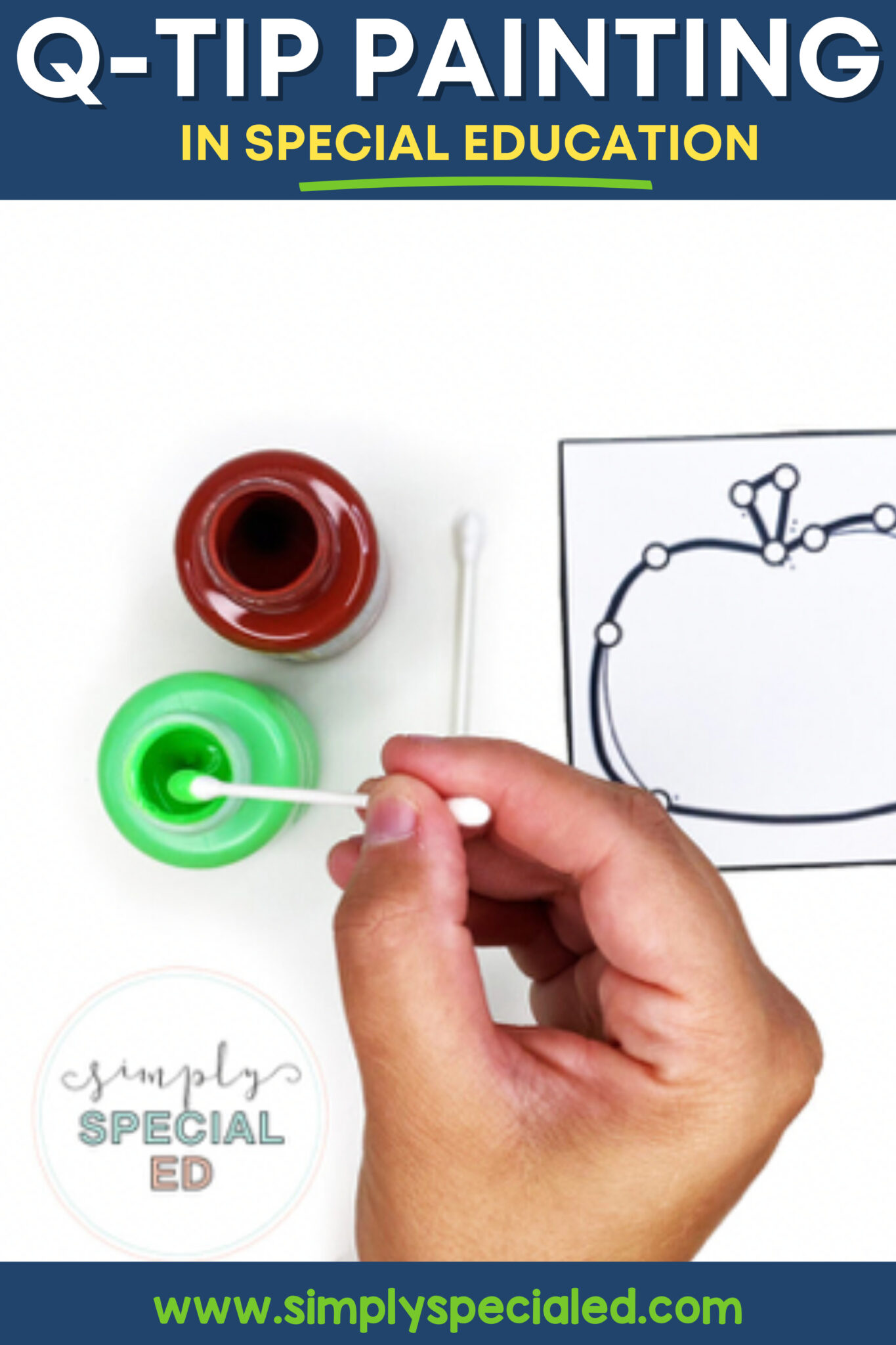
Why Q-tip painting?
There are many reasons why Q-tip painting is beneficial for students in special education [and with all students!]. As a school-based occupational therapist, this is definitely a go-to craft activity for me! Below are, what I consider, the top three skills it promotes!
1. Improved Grasp
If you’ve read any of my other blogs, you know that I address building a functional utensil grasp in many of them! From self-feeding to legible handwriting, having a mature, functional grasp on any utensil is a foundational skill to improve independence in a variety of daily tasks. You may recall, in my Building Blocks to Success in Pre-Writing blog series, I discussed many ways to engage children in fun fine motor strengthening activities to build a mature grasp pattern! Q-tip painting would be one of those activities! Having a thin, short “utensil” to paint or write with prevents students from using a fisted grasp or one with all of their fingers stacked. Since a Q-tip is shorter in length, a tripod grasp is encouraged and likely automatic!
2. Build Fine Motor Precision
In the Fall Fine Motor Centers, students paint dots with Q-tips during the “Poke It” center [pictured above]. Not only is a functional grasp encouraged, but now, student are required to use precise fine motor movements to make their dot exactly where the worksheet indicates. You don’t have to use pictures/dots as small as these initially! Any kind of painting/tracing/coloring, etc. would work well! Check out the Simple Writing: Tracing Lines and Shapes Books and consider using Q-tip painting rather than paper/pencil or dry erase markers to add a fun new spin on traditional tracing practice!
Multi-Sensory Practice

As you may already know, I’m a proponent of involving as many senses as you can into early learning; especially with fine motor skills! I’ve blogged about multi-sensory approaches to pre-writing as well as multi-sensory letter formation strategies in the past. Finger painting is a great way to add some tactile sensory input to (pre) writing activities! Try throwing in some different tools like Q-tips, paint brushes, etc. when offering finger painting activities! Kiddos tend to gravitate towards tools that they see adults using, like Q-tips. While it may seem inconsequential to us, it might be very intriguing to our littles! Make your own puffy or pudding paints using the Sensory Visual Recipes and use Q-tips to paint with it! The possibilities are endless!
How can we use Q-tip painting?
Q-tip painting can improve utensil grasp, fine motor precision and promote multi-sensory learning! Now that we’ve discussed all of the benefits and skills, let’s check out some ways you can easily incorporate it into you classroom lessons or therapy sessions!
Writing Activities
- The Simple Writing: Tracing Lines and Shapes Books can be used with Q-tip painting rather than paper/pencil or dry erase markers!
- The Simple Writing: Pre Writing Tracing Binder has 117 pages of tracing activities [including tracing color words!] that can be done with Q-tip painting!
- Or just get The Simple Writing Bundle with a variety of levels!
Fine Motor Centers
- The Original Fine Motor Centers don’t have a Q-tip painting center, BUT you can easily incorporate it in to the tracing, Montessori hole puncher, or dot sticker centers!
- In the Fall Fine Motor Centers, students paint dots with Q-tips during the “Poke It” center.
- Make your own centers with a variety of Q-tip painting activities that address your specific student needs!
Visual Crafts
- The September Visual Crafts include a handprint tree craft that includes Q-tip painting!
- The November Visual Crafts include a fun example of Q-tip painting with a turkey craft!
- The January Visual Crafts include a craft with sponge AND Q-tip painting!


The post Q-Tip Painting in Special Education appeared first on Simply Special Ed.




